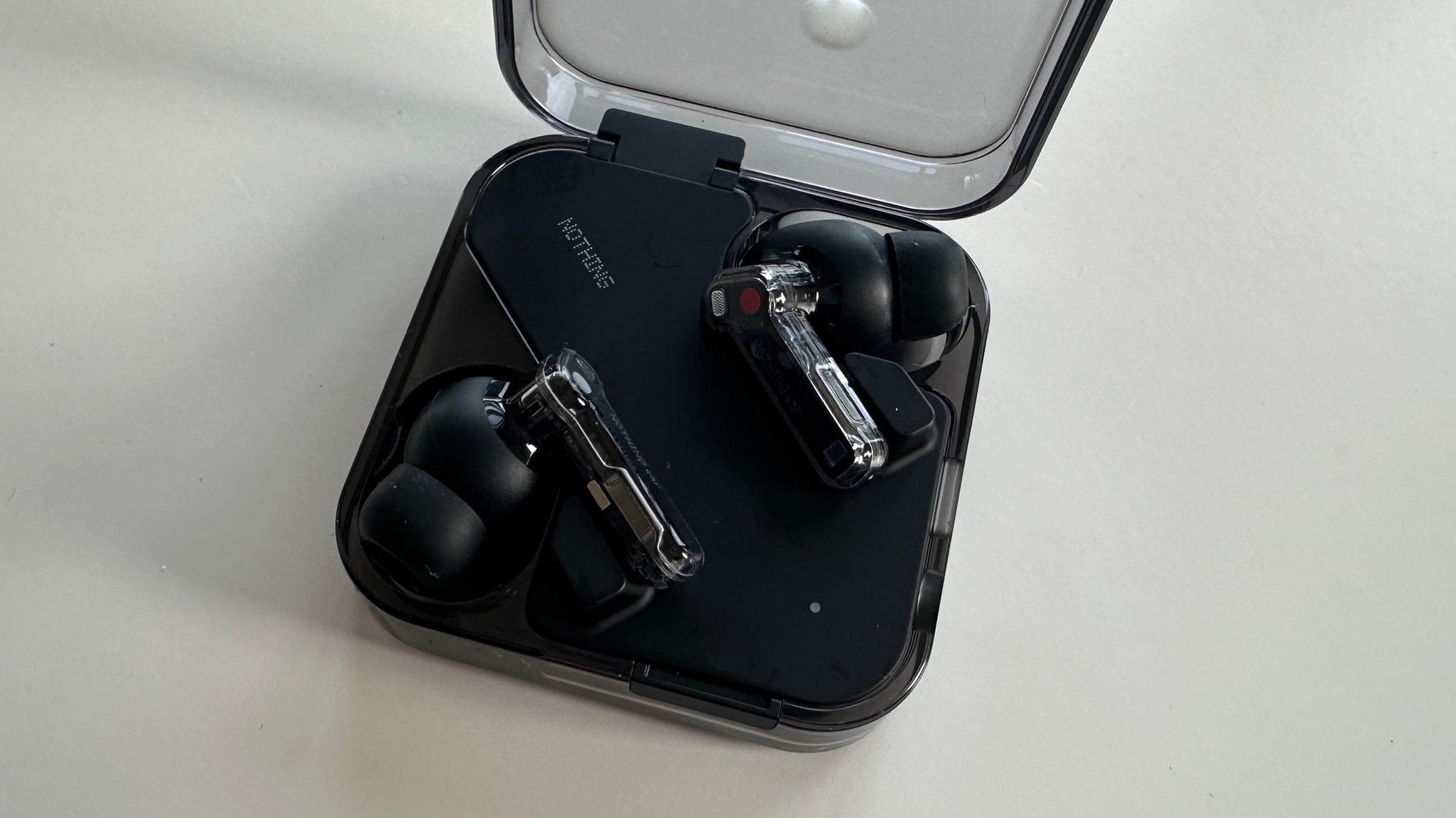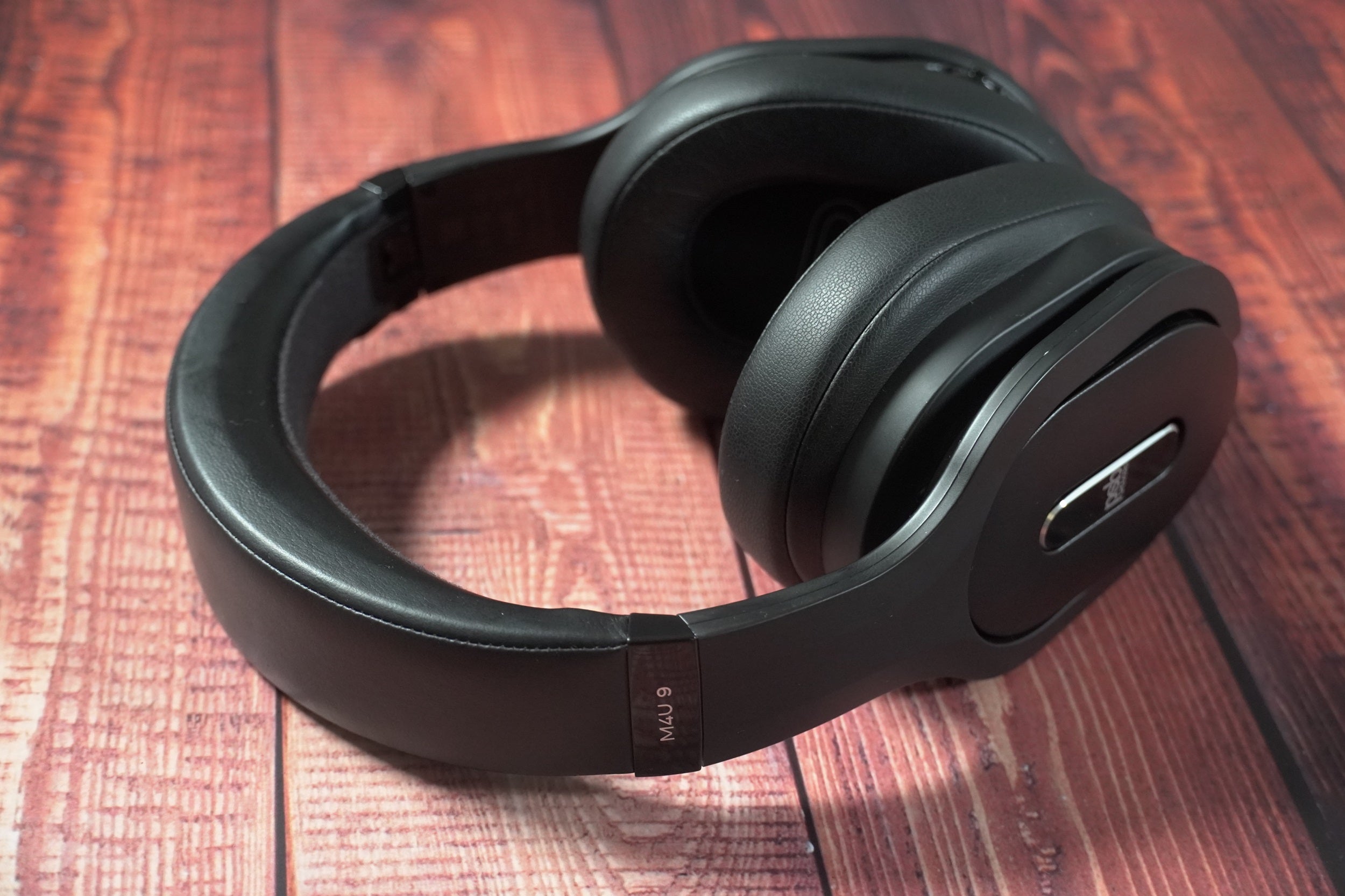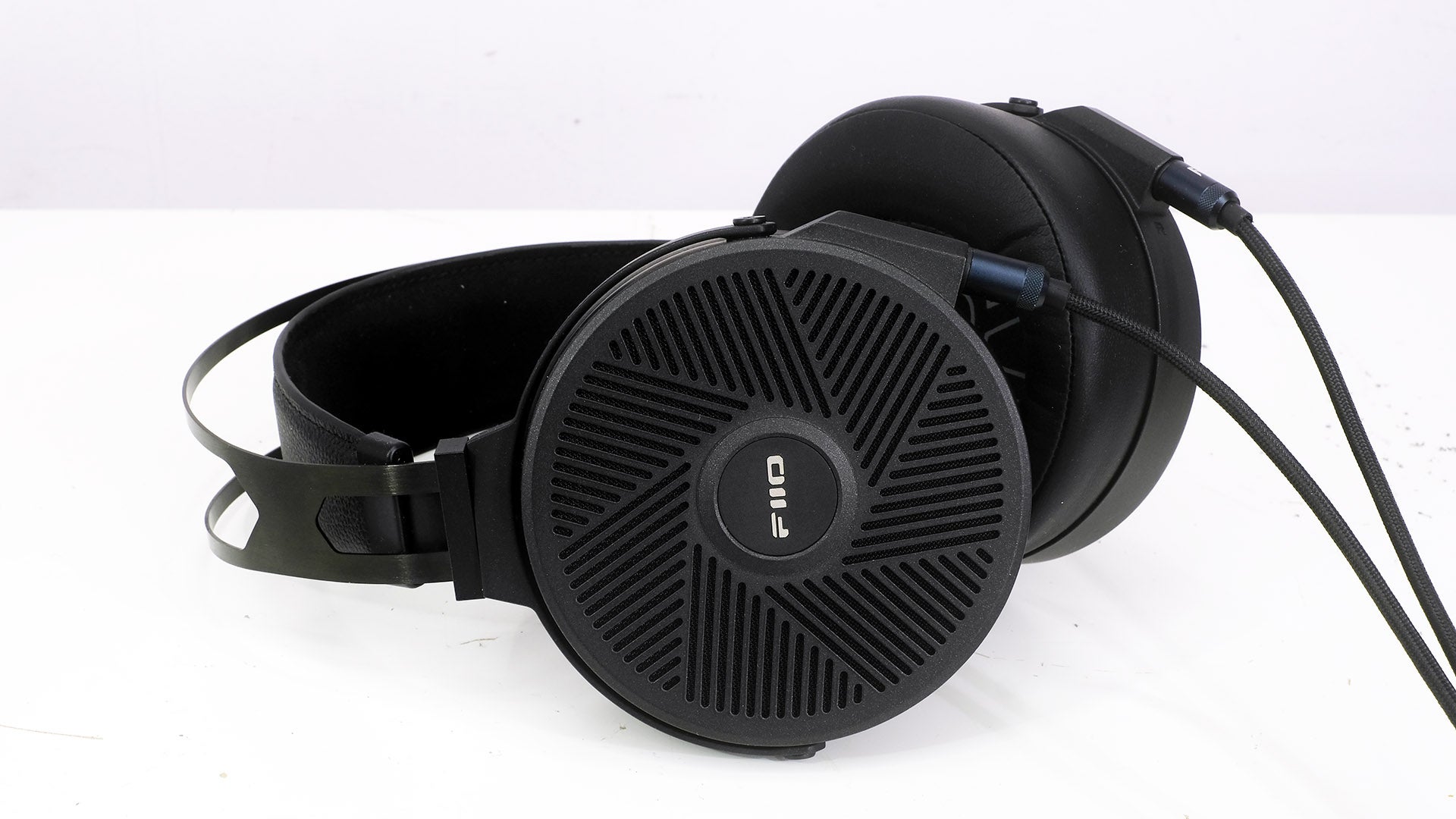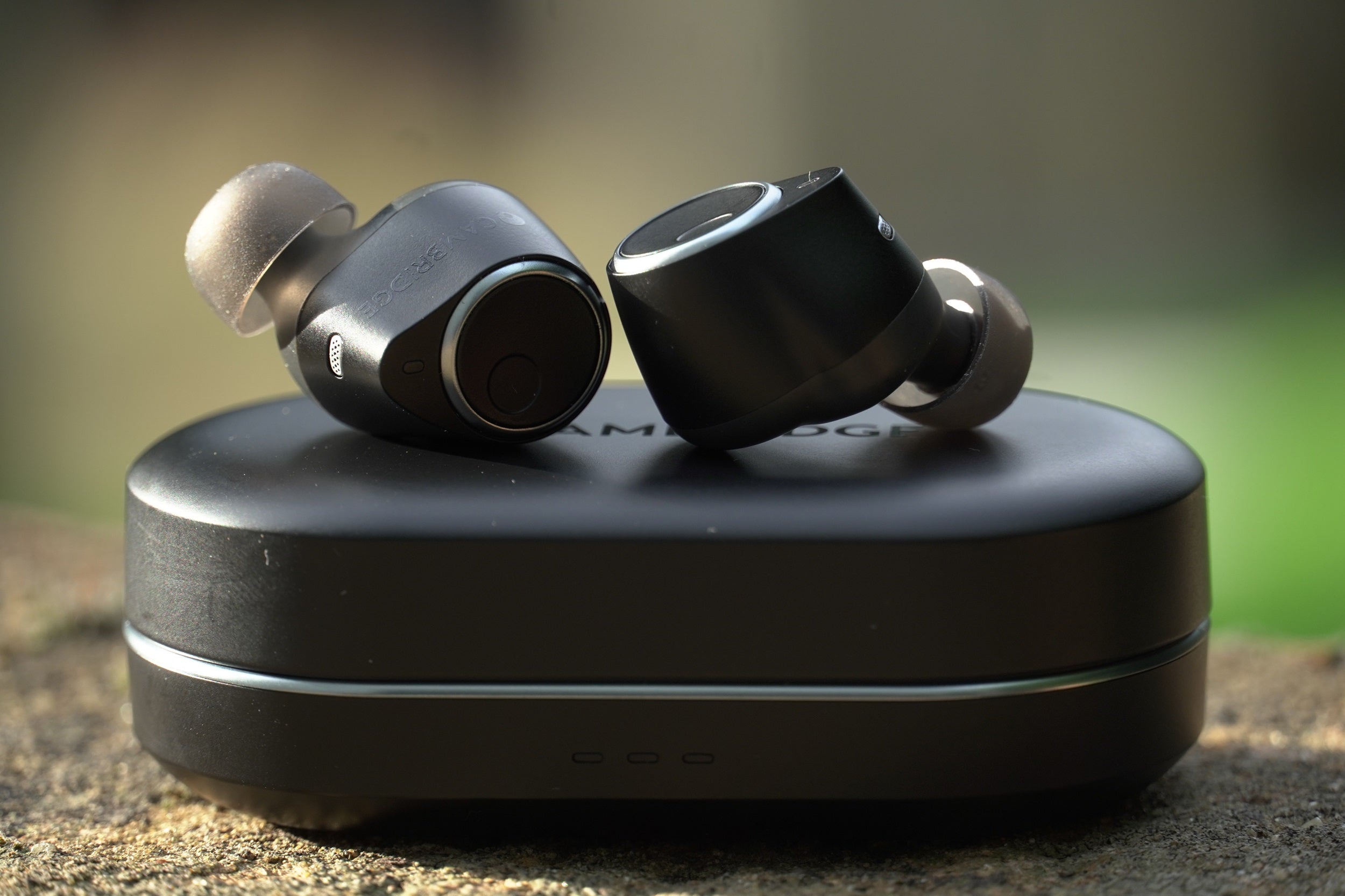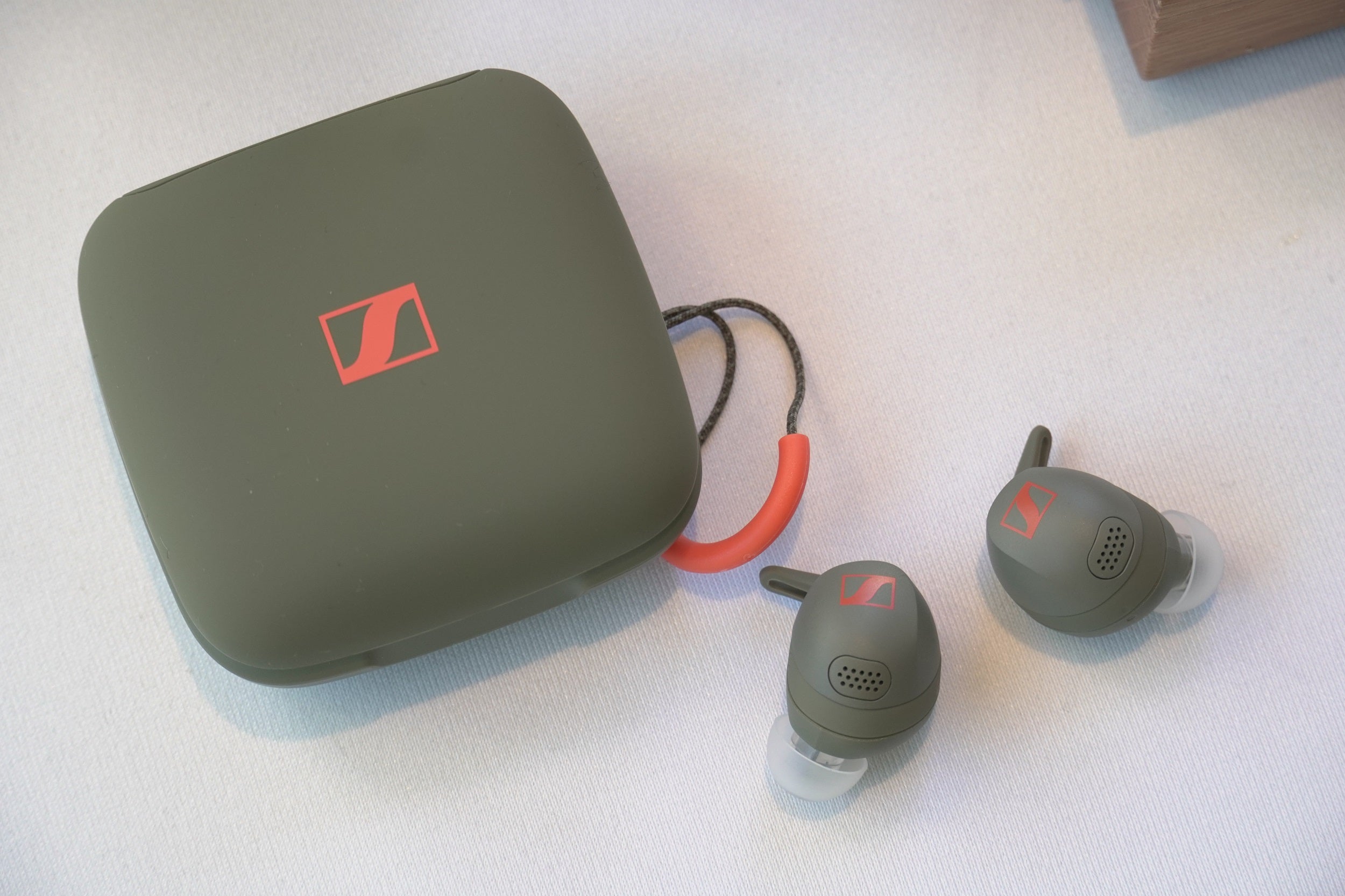Nothing Ear (stick) Review
Is there enough substance to go with the Ear (stick)'s undoubted style?
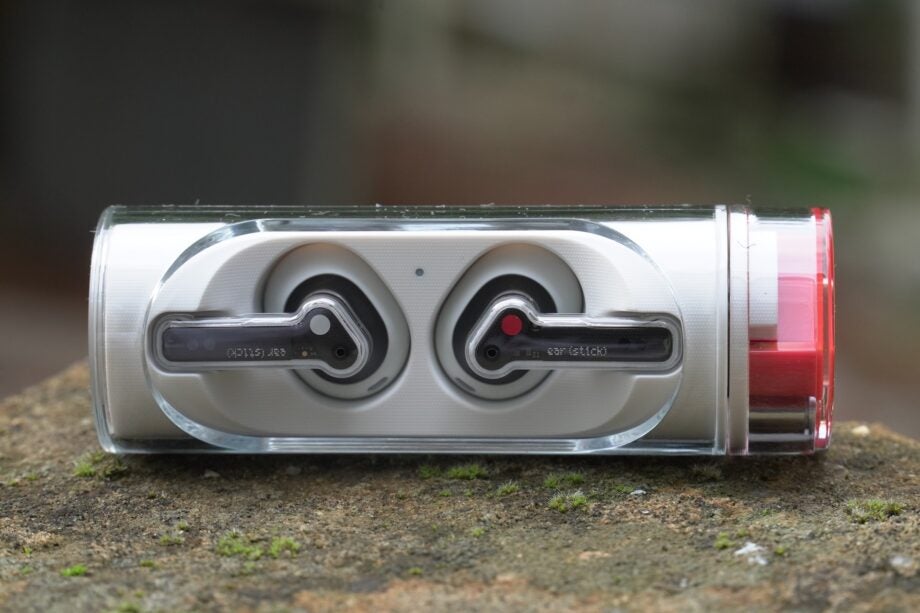
Verdict
A true wireless that will be perfect for some and imperfect for others, the Nothing Ear (stick)’s distinctive design will pique interest, but there isn’t enough substance to the audio to overcome its undoubted style.
Pros
- Lightweight and distinctive design
- Very good call quality
- Good wireless performance
- Good battery life
Cons
- Audio sounds thin and lacks weight
- Design susceptible to outside sounds
Availability
- UKRRP: £99
- USARRP: $99
- EuropeRRP: €119
- CanadaRRP: CA$149
- AustraliaRRP: AU$179
Key Features
- Bass Lock Technology:Detects bass loss and optimises the sound in response
- Nothing X app:EQ / touch-control customisation for those without a Nothing Phone (1)
- Clear Voice Technology:Microphones pick up voice for clear call quality
Introduction
Nothing emerged on the audio scene, backed by Carl Pei of OnePlus fame, with the Ear (1) true wireless, subsequently following that up with the Phone (1) and now, the Ear (stick).
Nothing has picked up a reputation for devices that exude a youthful vibe and fashionable tastes, owners of its devices are more likely to be hanging out with the fashion cognoscenti than talking about the difference between FLAC and ALAC.
That focus can, however, lead to accusations of style over substance. On the flip side, it could be said that style is very much the substance as far as Nothing is concerned.
Design
- Trademark see-through design
- Lightweight
- Susceptible to outside noise leaking through
The Nothing Ear (stick) opts for an open-ear design in comparison to the closed design of the Ear (1), and that inevitably brings issues to the fore.
Some prefer the open-ear approach as they not only dislike the feeling of buds inside their ears, but they also prefer the comfort earphones resting on the earlobe provide – as well as a degree of situational awareness they offer. After all, there’s a reason why Apple AirPods are so popular.
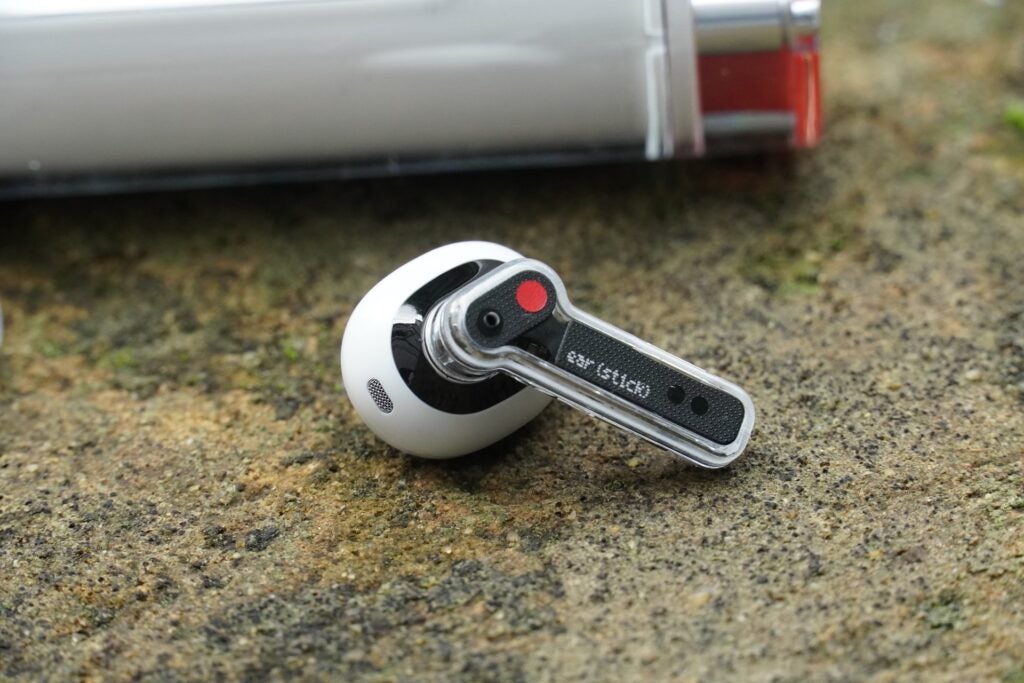
So, in that regard, the Ear (stick) has fulfilled the design brief, as these earphones are impressively light (4.4g each), barely noticeable when worn, and you can, quite clearly, hear what’s going on around you.
But the obvious limitation is a lack of isolation. With no ear tips to subdue the surrounding environment, I could hear everything. This becomes problematic in moments where you want to focus on the audio. I wore the Ear (stick) to a supermarket, and it was difficult to isolate what I was hearing from the whirring sounds of fridge freezers and the clanging of shoppers putting food into their trolleys – the audio and the environment washed together uncomfortably.
These earphones’ fit is loose, and while there’s a degree of movement when going for a walk, they never fell out and stayed put despite vigorous shakes of the head. With an IP54 rating, they offer resistance against dust, water and sweat, so using them for exercise is an option. These buds only come in a white finish, which meant the contents of my ears were often visible when I removed them.

The Ear (stick) earbuds use a force sensor on the stem, and this works better than most due to some well-pitched sensitivity: I wasn’t left fumbling for the controls as I have with some other earphones. I’m not usually a fan of force sensors, but this is one of the better implementations I’ve come across.
Controls are simple enough: one pinch to play/pause, two to skip forward, and three to skip back. A hold turns the volume up or down, depending on the bud, while a double press and hold is not assigned but can be designated as the voice assistant in the Nothing X app.
The Ear (stick) has a unique appearance as the transparent design provides a look at the circuitry within its glass encasing, giving the impression of wearing something that seems like high-tech jewellery.
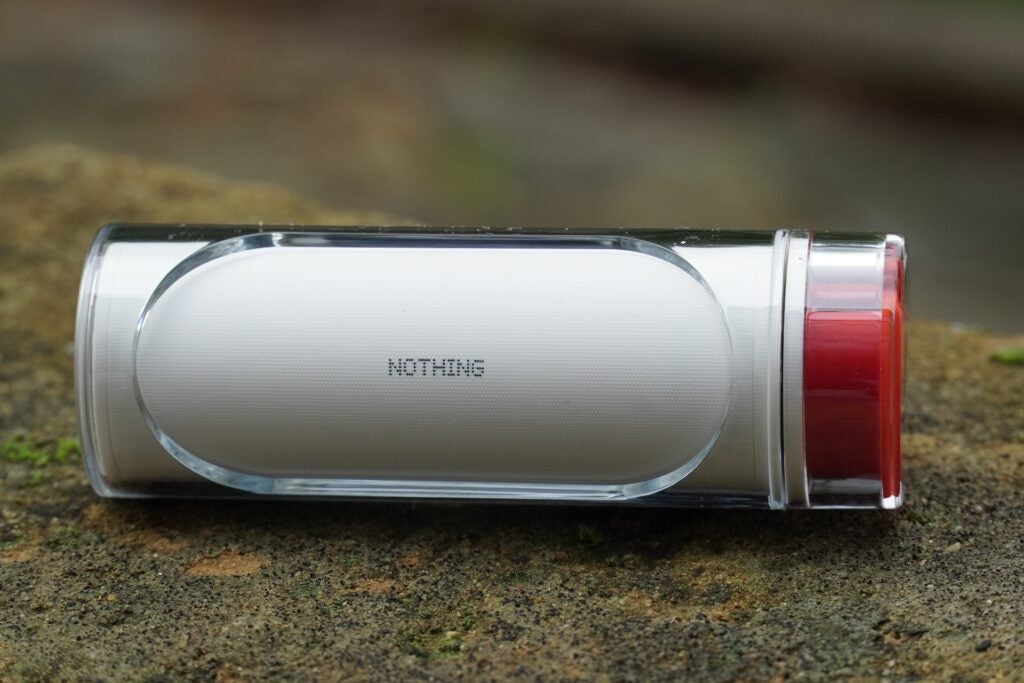
The transparent cylindrical charging case is a nice touch too, looking like a lipstick holder in the same vein as the Huawei FreeBuds Lipstick – except the Ear (stick)’s design is perfect for fidgeting with. You’ll find yourself rolling the case about in your hands and flicking it open more frequently than you’d admit. The coarse texture of the case’s surface makes it grippy to hold, and it’s of a reasonable size to slot into a pocket.
A twist of the case reveals the earphones nestled inside and a light that indicates the battery level. Dirt can get in-between the case and its glass cover, which can be difficult to extract. On top of the case is a USB-C port for charging, and next to it is a button for initiating Bluetooth pairing.

Features
- Strong wireless connection (after update)
- Good battery levels
- Very good call quality
- Integration with Nothing Phone
Nothing claims that the Ear (stick)’s battery life is about 7 hours of listening – an hour and a bit more than the noise-cancelling Ear (1). But that figure falls to about 3 hours if you’re primarily using these earphones for calls. But add the case, and it’s a healthy 29 hours of total listening time, or 12 hours of calls.
With regular use, 2 hours of use resulted in a drop of 20% of battery, which is a promising figure (and this was after a recent update). The buds charge relatively fast too, and if you need a boost, 10-minutes will give you another 2 hours.
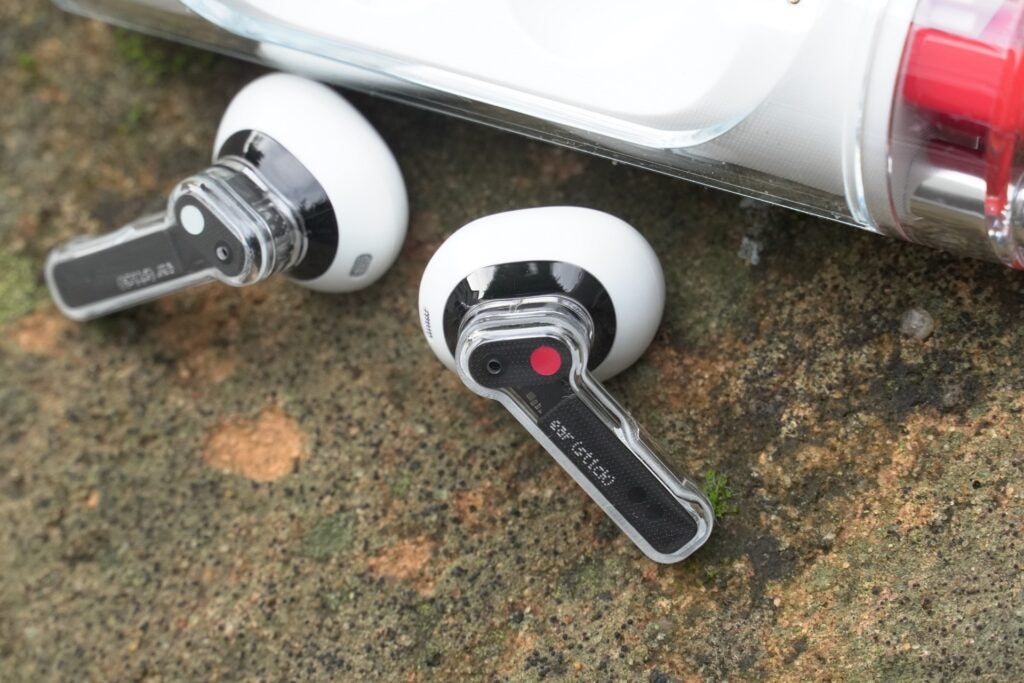
Bluetooth is supported up to v5.2, with SBC and AAC wireless audio. Initially, when I walked through the packed concourses of Waterloo and Victoria train stations the connection was choppy, but since I downloaded the update, the strength of the Bluetooth connection has jumped in the other direction. The earphones have been remarkably stable and the signal hasn’t come close to faltering.
There’s no noise cancellation or transparency mode, which is served by the more expensive Nothing Ear (1) (it is, apparently, more expensive to produce).
The in-ear detection gets on its bike and pauses/restarts promptly, and call quality impresses as well. I’d have expected earphones with an open design to struggle against the elements, but they picked up my voice well and relayed it to the person on the other end of the call without picking up much noise.

People talking close by were audible, and the person on the other end did mention that everything sounded loud, but my voice came across as clear and intelligible. On that front, the Ear (stick) passes with flying colours.
The Nothing X app offers customisation, with access to changing the controls or modifying the EQ. With the latter, there’s the choice of more bass (a tiny bit more), more treble (a slight increase), balanced (the default option) and the Voice mode, which crudely amplifies vocals. Custom mode allows you to swipe on a graphic and extend the bass, mid and treble (from -6 to +6).
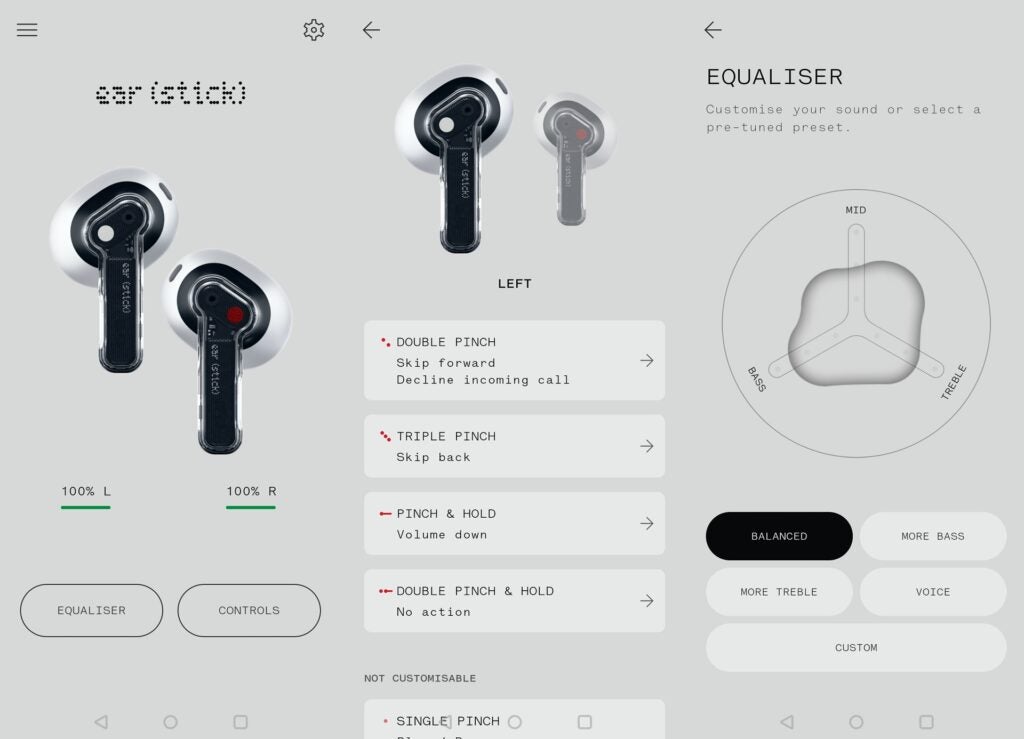
Other features include managing the in-ear detection and the low lag mode that minimises latency (the buds can switch to this mode automatically when gaming on a Nothing (1) Phone). Lose the earphones and you can locate them with the Find My… feature that triggers a chirping sound. Updates are also provided through the app and, so far, don’t take too long to download and install.
When used with a Nothing (1) Phone, the Ear (stick) integrates on a system level – much like Apple AirPods do with an iPhone. You get access to the same settings as you would in the app, but they’re available by swiping down from the top of your screen. Other features include Google Fast Pair with Android devices, along with Microsoft Swift Pair for connecting to Windows devices.
Sound Quality
- Custom dynamic driver
- Thin-sounding performance
- Lacking in bass weight
Featuring a large, 12.6mm custom-designed dynamic driver, for the Ear (stick), Nothing has created the Bass Lock Technology to prevent sound leakage from the open design, with software that detects bass loss and tunes the equalizer curve to compensate.
It’s a sign that Nothing is aware of the issues a design such as this can provoke and decided to be proactive in managing it, but there are those aforementioned issues the Ear (stick)’s audio can’t circumvent. When it gets loud outside, it meshes with the audio to the point where you can’t hear what’s being sung, and it also has the effect of nerfing the earphones’ bass performance.
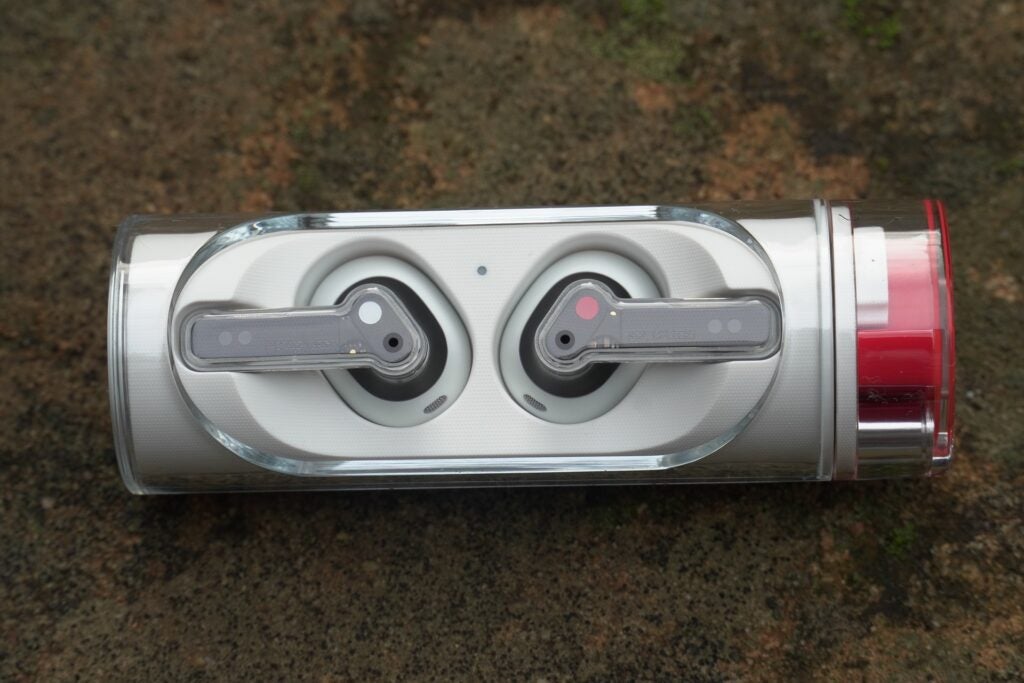
They sound better indoors than outside and there’s more detail to hear without external distractions. The buds’ tone errs more towards a neutral and crisp representation (at least with the Balanced EQ preset), but it’s a soundstage portrayed in compact terms despite the large custom driver, with a midrange that sounds thin and vocals and instruments that lack weight.
Give it a track like Amon Tobin’s Get Your Snack On, and bass is not the Ear (stick)’s strongest point, but neither is it completely ignored within the frequency range. The high frequencies are crisp in tone but not always the most detailed or brightest: the leading and trailing edges (the beginnings and ends of notes) of cymbal crashes tend to morph into one less distinct sound.
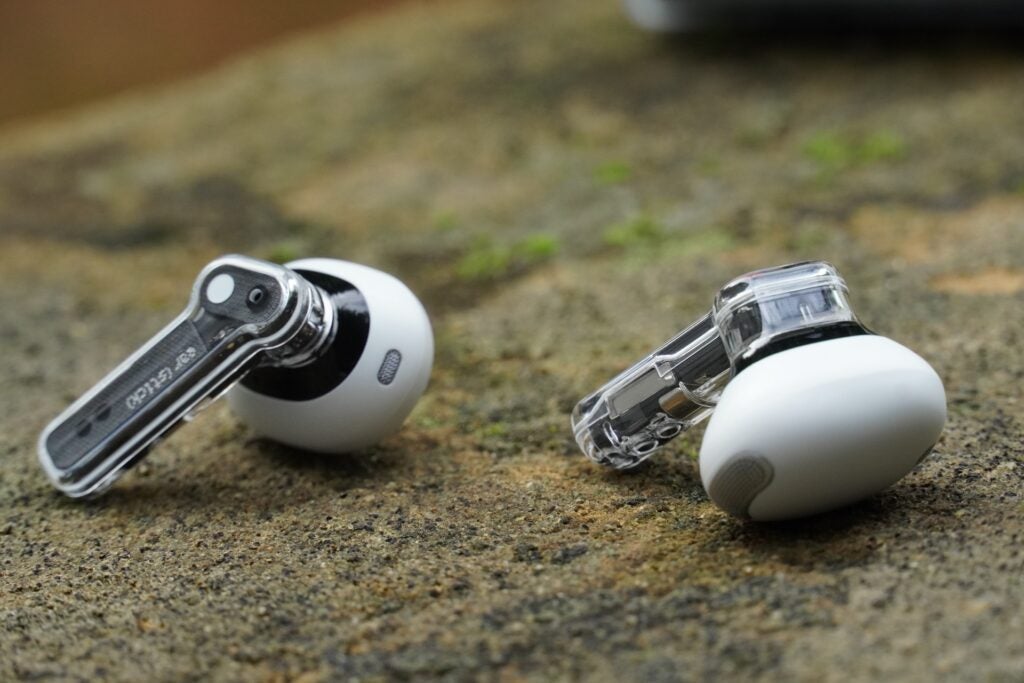
The song’s dynamics feel muted, as does its overall sense of dynamism, and while you can hear the various beats and instruments, there’s not much space either around each one or between them, leading to a slightly mushy sense of definition and rhythm.
In Christina Aguilera’s Mercy on Me, the singer’s vocals have a decent reach and dynamism, but the thinness to the Ear (stick)’s midrange rob her voice and instruments of a more musical tone. It’s a performance that sounds a little too crisp and sparse – cold rather than rich. While it’s listenable, it doesn’t captivate, especially with a voice like Aguilera’s.
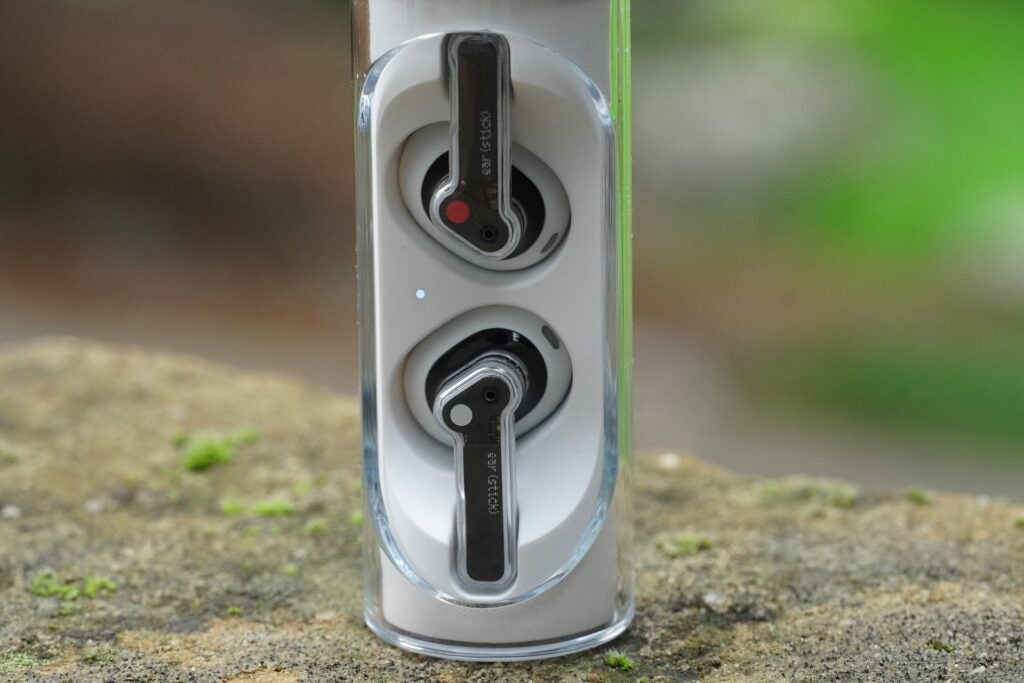
I had similar results with Doves’ Black and White Town. Here, Jez Williams’ vocals don’t have the size or heft to make an impact, and the tone of his voice sounds slightly off – a bit hollow and coarse. Meanwhile, Elbow’s The Loneliness of a Tower Crane Driver can edge its way towards sibilant tones with Guy Garvey’s vocals.
Playing Gossip’s Standing In the Way of Control, the Ear (stick)’s grasp of dynamics and rhythm is a bit better. The drumbeat has some decent punch, and there’s an intensity to the more energetic parts of the track. But from a tone perspective, there’s just something a little cold about these earphones’ performance.
Latest Deals
Should you buy it?
If you like lightweight, comfy earphones: The Ear (stick) earphones are very light to wear for long stretches of time. Also, Nothing Phone (1) users will appreciate the tight system-level integration.
If you don’t like hearing what’s around you: These earphones look great but the open design doesn’t do the audio any favours in noisy areas. The Nothing Ear (1) is a better alternative if you’re interested in Nothing headphones specifically.
Final Thoughts
The Nothing Ear (stick) is a well-designed and well-featured true wireless pair, but its design is its biggest sticking point (pun not quite intended). The open design allows sounds to wash through, which is a problem in busy places. While some will make the case for the comfort and awareness this design provides, should that be at the expense of the audio?
I don’t think it should be. While these earphones offer decent audio, it’s constricted by the design. Bass is lacking, the midrange is on the thin side, and the high frequencies aren’t the brightest. It all makes for a performance that feels restrained rather than expressive.
I’d wager these earphones will be perfect for some and imperfect for others. If you prefer this design and can live with the intrusions from the outside world, the Ear (stick) is a true wireless that’s well thought out for the most part, but the most important aspect of its performance is also its weakest part.
How We Test
We test every headphone set we review thoroughly over an extended period of time. We use industry standard tests to compare features properly. We’ll always tell you what we find. We never, ever, accept money to review a product.
Find out more about how we test in our ethics policy.
Tested over several weeks
Tested with real-world use
FAQs
There is no wireless charging supported by the Ear (stick), only support for fast-charging. The more expensive Ear (1) ANC earphone does support wireless charging, however.

